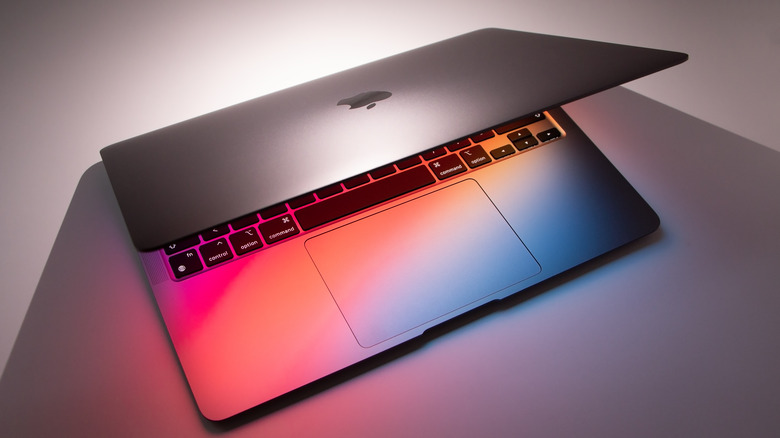How To Check Your Macbook's Battery Health
If you've owned a MacBook, at some point, you're likely going to deal with issues of battery degradation. The longer you use electronics, the greater the chances are of it happening. Once your battery starts to go, it'll get count down to 0% faster, and by extension, require charging more often.
There's no way to prevent your MacBook's battery from burning itself out, and while perpetual energy is theoretically possible, the experimental technology is still nowhere near viable for consumer use. You can, however, follow some of Apple's recommended practices to extend your MacBook's battery life, or, rather, delay its demise.
And while you may not be able to stop it, it helps to track it. You can keep tabs on your MacBook's battery life to get an idea of how much it may have degraded so far, and estimate how much longer you have before the drain becomes unmanageable.
How to check the health of your MacBook battery
The process of checking on your MacBook's battery is fairly straightforward. Start by opening the Apple menu and selecting System Preferences, then choosing Battery > Battery. At the bottom of the Battery window is a button that says Battery Health. Select that to see how your MacBook's battery is doing.
Your results should come with an explanation, but ideally your battery condition will display as "Normal." Otherwise you may see "Service recommended" if your battery is operating sub-optimally, at which point Apple advises getting it replaced.
Below your battery's health, you can see its maximum capacity. This percentage indicates how the battery's current capacity compares to when it was brand new. the lower it is, the faster the battery will drain. On average, you likely won't start to see any noticeable dip in performance until maximum capacity starts to dip below 80-percent — something that Apple says should be around five years with average use.
Why you should monitor you MacBook's battery
All batteries deteriorate over time, even with the advancements Apple has made with its MacBook charging. No matter what, after going through enough charging cycles from zero to 100%, it's going to start dying.
A battery that's reached its cycle limit isn't completely useless as it will still be able to function, and it will certainly work while charging, but it will be working at a diminished capacity while unplugged. You won't necessarily need to replace your battery when it's passed its prime, but you may start to notice that it takes less time to burn through its charge. Eventually it will completely lose the ability to hold a charge at all, at which point you'll either have to keep your MacBook plugged in at all times or have the battery replaced.
If the MacBook is old enough, and you're considering upgrading, trading your old MacBook in for a new model is also possible.


